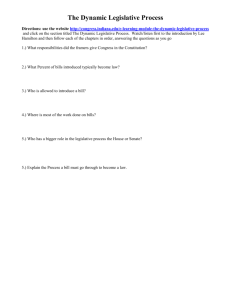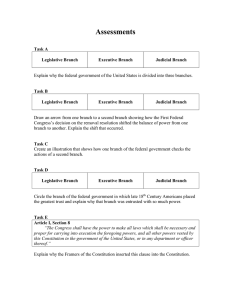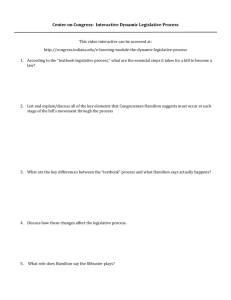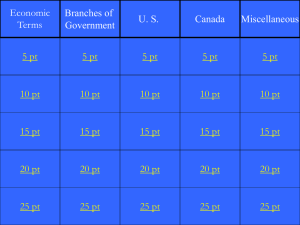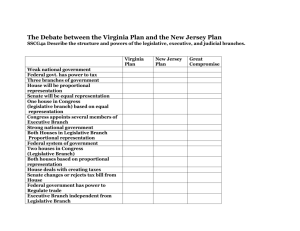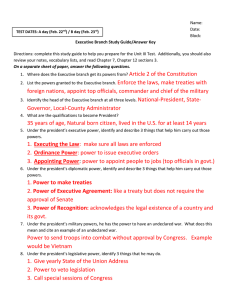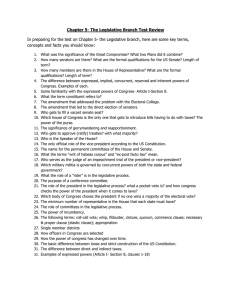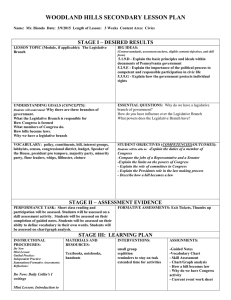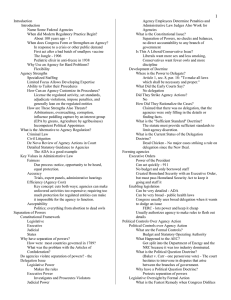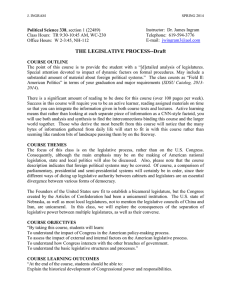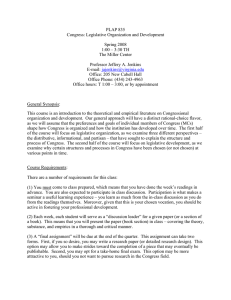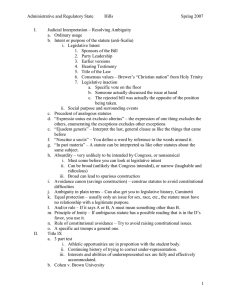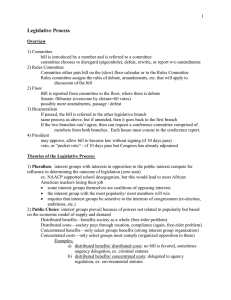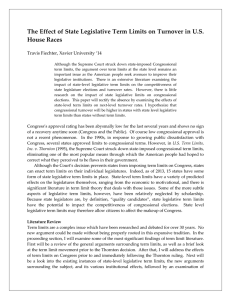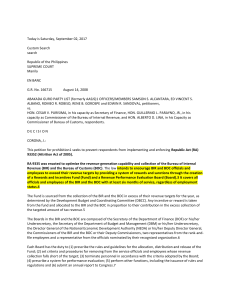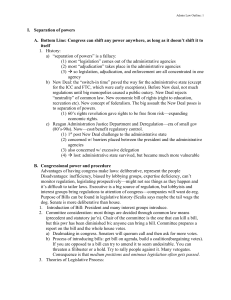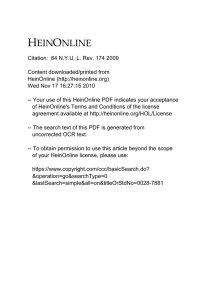Document 14118428
advertisement
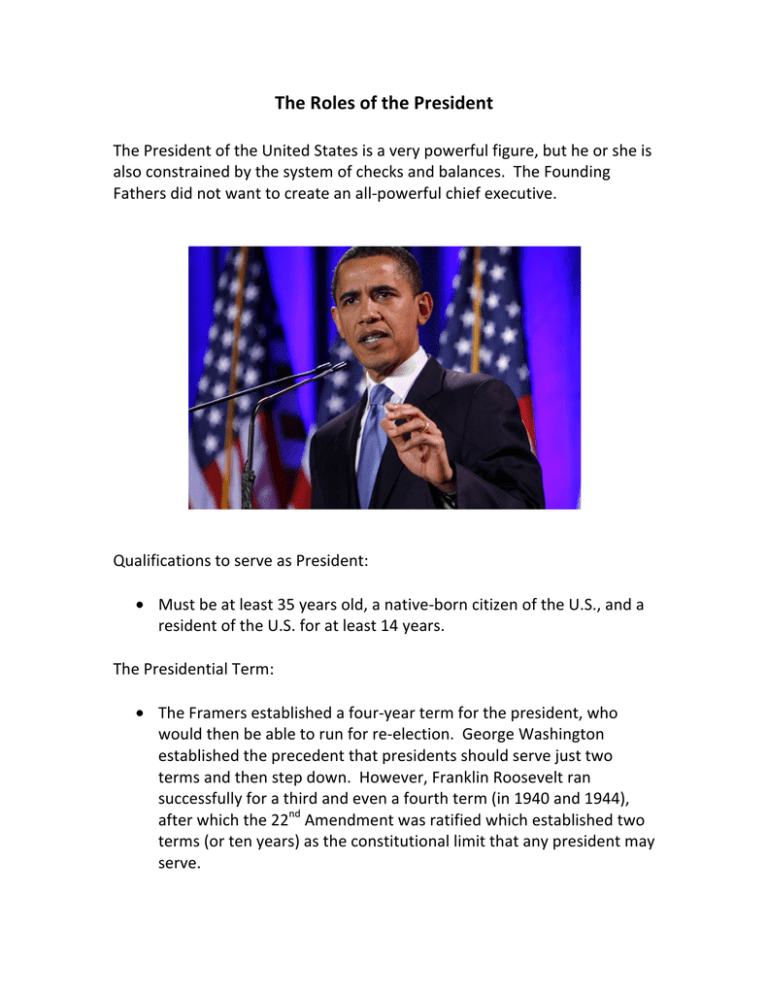
The Roles of the President The President of the United States is a very powerful figure, but he or she is also constrained by the system of checks and balances. The Founding Fathers did not want to create an all-­‐powerful chief executive. Qualifications to serve as President: • Must be at least 35 years old, a native-­‐born citizen of the U.S., and a resident of the U.S. for at least 14 years. The Presidential Term: • The Framers established a four-­‐year term for the president, who would then be able to run for re-­‐election. George Washington established the precedent that presidents should serve just two terms and then step down. However, Franklin Roosevelt ran successfully for a third and even a fourth term (in 1940 and 1944), after which the 22nd Amendment was ratified which established two terms (or ten years) as the constitutional limit that any president may serve. Pay and Benefits: • Since 2001, the President’s salary has been set at $400,000 a year. In addition, the President receives a $50,000 a year “expense allowance.” In addition, of course, the President and his family live in the White House, have a large staff, and may use a chauffeured limousine, fly on Air Force One or Marine One (helicopter), and have access to Camp David, a mountain retreat that is used for weekends and vacations. The President fulfills a variety of roles simultaneously: Chief Executive: The President is charged with seeing that the nation’s laws are ‘faithfully executed.’ He is the head of the executive branch of the federal government, which has over 2 million employees. Commander in Chief: The President is Commander-­‐in-­‐Chief of the nation’s armed forces and is responsible for all major military decisions. As Commander-­‐in-­‐Chief, the President may send US troops into action in foreign countries for up to 60 days without Congressional approval. Chief Diplomat: The President is responsible for guiding America’s foreign policy and he is the chief spokesman of that policy to the rest of the world. Link Legislative Leader: The President sets the legislative agenda and then works with Congress to see his policies implemented. He sets out his legislative agenda in the annual State of the Union address. The relationship between the President and Congress is not always cooperative, even when the President’s party controls Congress. Link Chief of Party: The President is the leader of his political party, and often serves as a fundraiser or makes campaign appearances for members of his party who are running for office. Chief of State: The ceremonial head of the government of the United States. The President represents the United States to the rest of the world.
